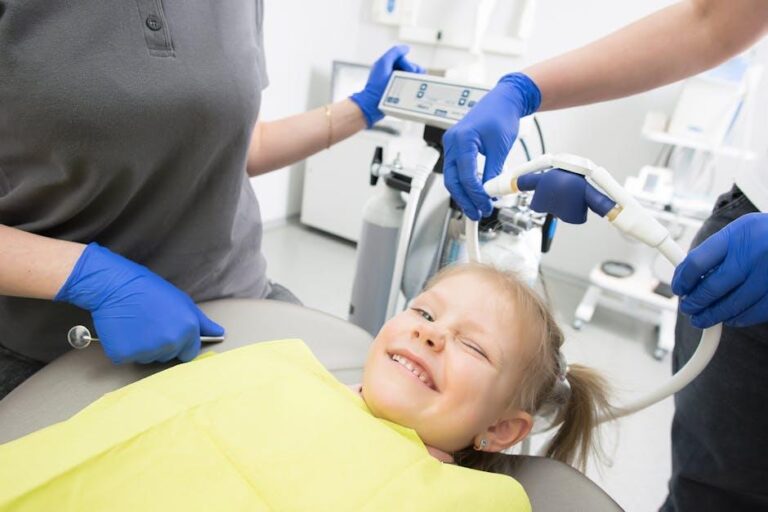1 in 3 Kids Has Dental Problems, Poll Finds – U.S. News & World Report
Dental health plays a crucial role in a child’s overall well-being, yet recent research highlights that many children in the United States face serious dental problems. According to a recent poll reported by U.S. News & World Report, approximately one-third of kids are suffering from dental issues. This statistic raises concerns for parents, caregivers, and health professionals alike, shining light on the importance of early intervention and preventive dental care for children.
Understanding the Scope: What Does “1 in 3 Kids Has Dental Problems” Mean?
The report brings attention to the high prevalence of dental problems among children under 18 in the United States. Dental problems can range from simple cavities and tooth decay to more severe conditions like gum disease and tooth infections. These issues, if left untreated, can affect a child’s nutrition, speech development, concentration in school, and overall quality of life.
| Dental Problem | Common Symptoms | Potential Impact |
|---|---|---|
| Cavities | Toothache, sensitivity to sweets/cold | Pain, difficulty eating, infection risk |
| Gum Disease | Swelling, bleeding gums | Tooth loss, bad breath |
| Tooth Decay | Visible holes, discoloration | Decay progression, tooth damage |
| Tooth Infection | Severe pain, swelling | Abscess, systemic infection |
The poll’s findings are a wake-up call to the nation, emphasizing how widespread dental challenges still are despite advances in modern dental care.
Key Causes Behind Dental Problems in Children
While dental health can be affected by various factors, the main culprits behind these prevalent dental issues in children include:
- Poor Oral Hygiene: Inadequate brushing and flossing habits can lead to plaque buildup, resulting in cavities and gum disease.
- Diet High in Sugar: Frequent consumption of sugary snacks, sodas, and juices fuels bacteria that damage teeth.
- Lack of Access to Dental Care: Children without regular dental checkups are at higher risk for undiagnosed and untreated dental problems.
- Socioeconomic Barriers: Families with limited resources may struggle to afford or prioritize dental care.
- Certain Medical Conditions: Some children with health issues or developmental disabilities may be more susceptible.
Why Children’s Dental Health Is Critical — The Long-Term Impact
Dental problems in childhood can have a lasting impact that extends into adulthood. Some of the key consequences include:
- Impaired Eating and Nutrition: Painful teeth can discourage children from eating a balanced diet.
- Speech and Developmental Issues: Missing or damaged teeth may hinder proper speech development.
- Lower Self-Esteem: Visible decay or missing teeth can affect social confidence and mental health.
- Increased Risk of Adult Dental Disease: Childhood dental problems can set the stage for chronic oral health issues later in life.
Practical Tips for Parents to Protect Their Children’s Dental Health
Prevention and early intervention are the best tools when it comes to pediatric dental health. Parents and caregivers can follow these strategies to reduce the risk of dental problems in children:
Daily Oral Hygiene Routine
- Help young children brush twice daily using a fluoride toothpaste.
- Introduce flossing as soon as two teeth touch, usually by age 2–3.
- Make brushing fun with music, videos, or rewards to encourage consistency.
Balanced Diet Choices
- Limit sugary snacks and beverages, especially between meals.
- Encourage whole fruits, vegetables, dairy, and water for balanced nutrition.
- Avoid frequent snacking or sipping sugary drinks over extended periods.
Regular Dental Checkups
- Schedule first dental visits by the child’s first birthday or when the first tooth appears.
- Maintain biannual dental cleanings and exams for early detection and treatment.
- Discuss fluoride treatments or dental sealants with your dentist as preventive options.
Education and Awareness
- Teach children about the importance of oral health from an early age.
- Lead by example—parents should prioritize their own dental health too.
Case Study: How Early Dental Care Made a Difference
Meet Emma, a 7-year-old girl from Chicago, whose family noticed she was frequently complaining of tooth pain. An early dental visit revealed she had multiple cavities requiring treatment. After receiving fillings and guidance on brushing and diet, Emma’s dental health improved dramatically.
Her parents committed to regular dental checkups and healthier eating habits. Within a year, Emma experienced no further dental problems, and her confidence soared during back-to-school season, highlighting the power of early, routine dental care.
Conclusion: A Call to Action for Better Pediatric Dental Health
The statistic that 1 in 3 kids has dental problems is a strong reminder that oral health among children requires urgent attention. By understanding the causes, consequences, and prevention strategies, parents and caregivers can protect their children from painful and potentially lasting dental issues.
Prioritizing pediatric dental care through education, daily oral hygiene, healthy diets, and consistent dental visits can transform the wellbeing of millions of children across the U.S. Early prevention is always better than treatment — and together, we can strive for a future where every child enjoys a bright, healthy smile.
Stay informed, stay proactive, and help your child build a lifetime of healthy dental habits.


